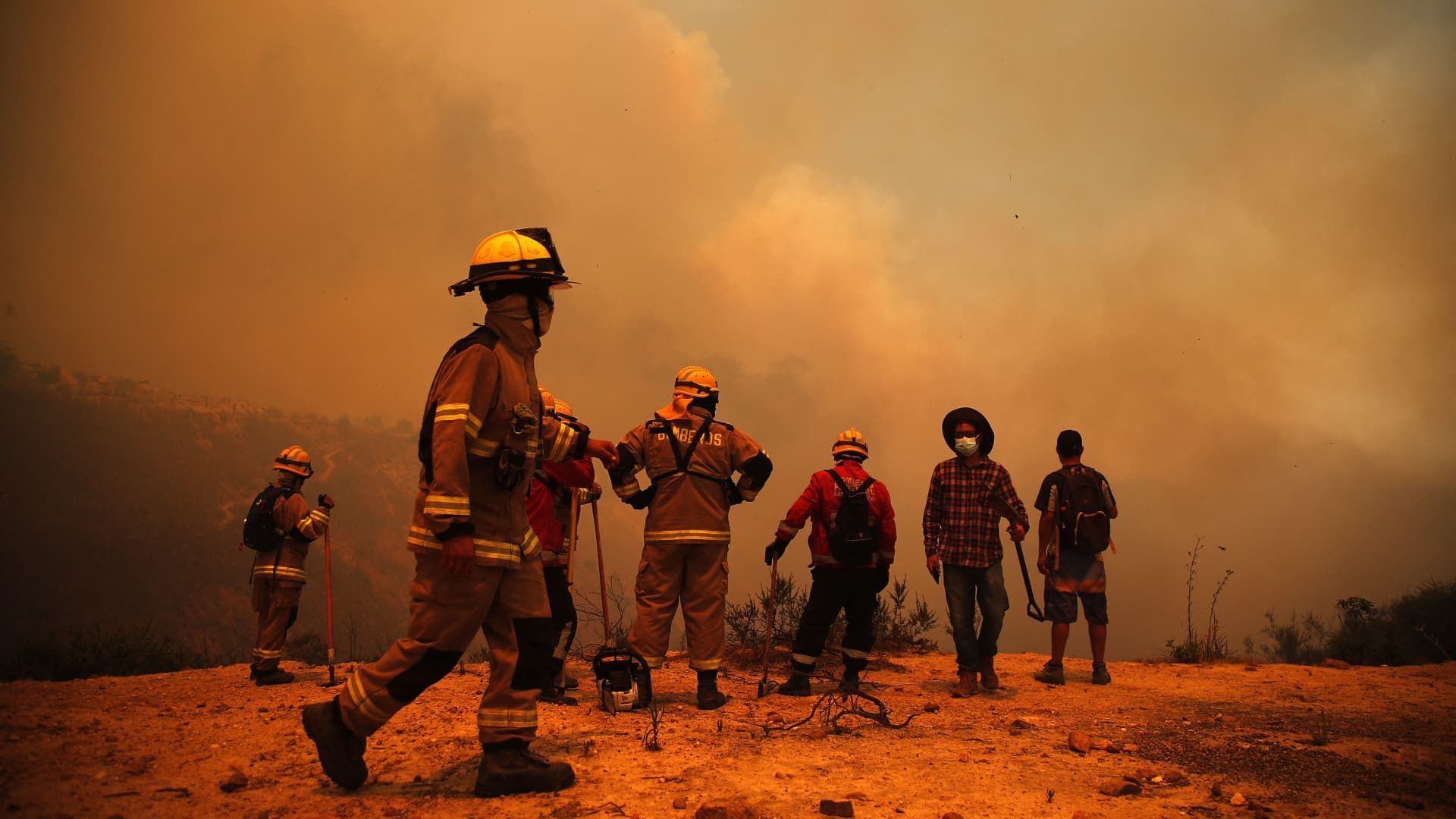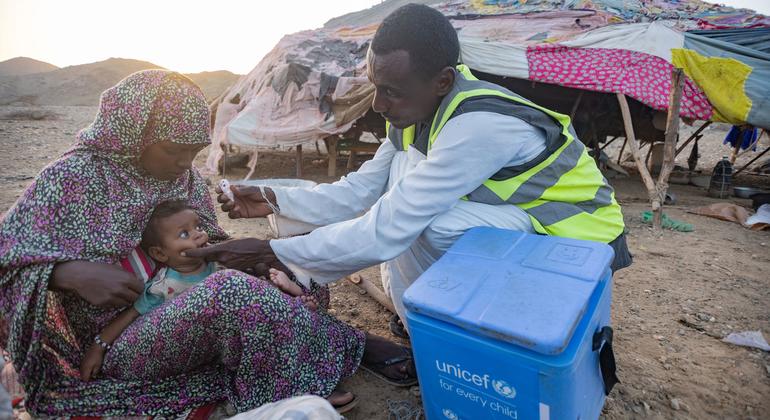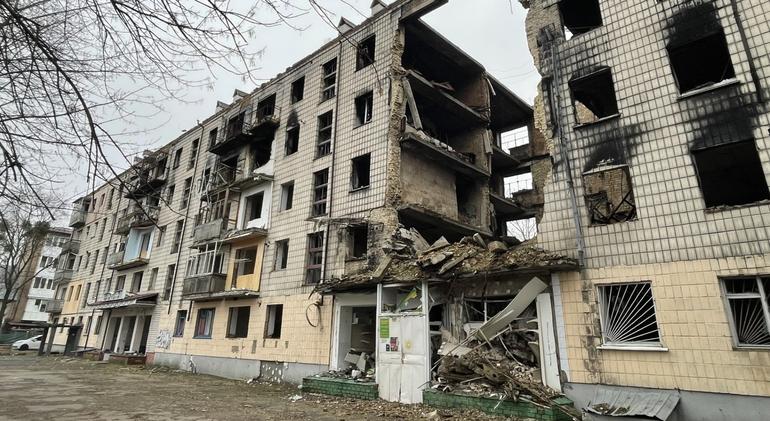Firefighters work in the area of a forest fire in the hills of the Quilpue commune, Valparaíso region, Chile, on February 3, 2024.
Javier Torres | afp | fake images
A quiet revolution is underway to address a widely underestimated climate challenge: extreme heat.
Local authorities have appointed several heat directors (CHOs) in cities around the world in recent years to prepare residents for increasingly frequent and severe episodes of excessive heat.
“They call it the silent killer,” said Eleni Myrivili, who serves as global CHO for the U.N. human settlements program and previously worked in a similar role for the Greek capital of Athens.
Myrivili believes extreme heat is often overlooked because it lacks the visible drama of roofs torn off houses or streets turned into rivers.
“I deeply believe that heat will be the number one public health challenge we face in the next decade. And we must prepare for it now,” Myrivili told CNBC via video conference. “We can, but we really need to make it a priority.”
Heat is the leading cause of weather-related death in the US. Data from the Centers for Disease Control and Prevention showed that more than 1,700 deaths were the result of heat-related causes in 2022, approximately double that of five years before. Researchers have said these are probably conservative estimates.
Most people wouldn't know that extreme heat kills more people in Australia than bushfires, floods and storms. There is a reason for this, and it is data delay.
Tiffany Crawford
Melbourne, Australia Heating Co-Director
The CDC defines extreme heat as summer temperatures that are significantly warmer and/or wetter than average.
Older adults, young children, and people with chronic illnesses are recognized as being among those most at risk for heat-related illnesses such as heat exhaustion or heat stroke. The CDC warns that even young, healthy people can be affected.
Miami, United States
The first person in the world to be assigned as CHO was Jane Gilbert, who was appointed in 2021 to oversee Florida's most populous county, Miami-Dade.
The CHO role was created by the Atlantic Council's Arsht-Rock Resilience Center, a US-based think tank that aims to support one billion people with resilience solutions by 2030.
“We have relatively high [air-conditioning] penetration, but with temperatures rising, electricity bills are skyrocketing. We have also raised electricity rates. “Air conditioning can account for more than 50% of the electricity bill, so people are choosing between air conditioning and putting food on the table for their families,” Gilbert told CNBC.
Miami, a coastal metropolis in the southern United States, is known internationally for its vulnerability to sea level rise and hurricanes. However, Gilbert said community-led surveys have identified chronic heat as the most pressing climate concern.
View of the Miami Bay Inlet Channel in Miami, Florida, during a heat wave on June 26, 2023.
Giorgio Viera | afp | fake images
For six months of the year, Gilbert said temperatures in Miami exceed 90 degrees Fahrenheit (32.2 degrees Celsius) almost daily, posing a particularly big problem for outdoor workers.
To help reduce risks to the county's population of 2.7 million, Gilbert said his team's action plan focused on informing and preparing people for extreme heat, helping cool homes affordably and work to cool community neighborhoods to address the so-called “heat island effect.” “, so a city has much warmer temperatures than nearby rural areas.
In practice, Gilbert said the measures included large-scale marketing campaigns targeting ZIP codes and demographic groups known to be most at risk, working with the national weather service and emergency management teams to update the advisory and warning levels. They also involved installing 1,700 efficient air conditioning units in public housing and ensuring that new affordable housing requires the most efficient cooling systems, such as cool and solar-ready roofs, to keep utility costs down.
“We want to address the root cause of this problem while helping people adapt,” Gilbert said.
Dhaka, Bangladesh
“All of us here have grown up in a typically hot and humid environment. We are used to heat, so it is very difficult to distinguish between normal heat and unsafe heat,” Bushra Afreen, CHO of Dhaka North in Bangladesh, told CNBC. via videoconference.
Afreen, who became the CHO of Dhaka North in May last year, said the stark income inequality in the country's largest city meant that excessive heat was not a universally similar experience.
“When you combine that with fragile urban systems like drainage and power outages and poor health management and poor health systems and poor education systems, you get a very bad stew.”
Right now, the two reactions we're seeing the most are “good job, keep up the good work, we need more awareness.” And the other guy is, 'oh, are you going to turn down the heat? Good luck.'
Bushra Afreen
Dhaka North Heating Director in Bangladesh
In addition to planting thousands of trees in northern Dhaka's informal settlements and reintroducing a water fountain culture to the city, Afreen said his team would implement a pilot project in a city settlement to create green nooks and crannies for respite. .
Afreen said it would be important to consider the type of trees to plant, such as citrus or neem trees to ward off mosquitoes amid a dengue outbreak. Sufficient lighting, a bench, CCTV cameras, a water fountain and signs indicating priority for women and children would also be needed, she added.
A rickshaw driver splashes water on his face for relief during a heat wave in Dhaka, Bangladesh, on May 10, 2023.
Nurfoto | Nurfoto | fake images
“Right now, the two reactions we're seeing most often are 'good job, keep up the good work, we need more awareness,'” Afreen said.
“And the other guy is, 'oh, are you going to turn down the heat? Good luck.'”
Melbourne, Australia
Melbourne co-director Tiffany Crawford told CNBC that extreme heat kills more people in Australia than bushfires, floods and storms.
“There is a reason for this, and it is the delay in data,” he said.
Crawford, who works alongside Krista Milne as Melbourne's CHO, said the true magnitude of heat-related deaths and illnesses often remains unclear until health authorities have pored over hospital admissions and ambulance data.
With a population of about 5 million, the city of Melbourne in southeastern Australia is known for its mild, temperate climate, but Crawford says it is prone to bouts of summer heat waves that last several days and They offer little respite during the night.
Environmental activists gather at the Flinders Street station intersection on December 9, 2023 in Melbourne, Australia. Australia's east coast is facing a severe heatwave, with temperatures expected to exceed 40 degrees Celsius in many places. Hot weather could be a trigger for devastating wildfires.
Diego Fedele | Getty Images News | fake images
“There's an extreme north wind blowing that's just fierce. I compare it to going outside and it's like someone left the oven door open or the heater on all night and forgot to turn it off,” Crawford said.
Some of the short-term interventions that have been implemented in Melbourne include extending public library and swimming pool hours and rolling out so-called cooling kits, which contain water bottles, neck towels and old-fashioned fans.
Looking ahead, Crawford said the city was in talks with Google to provide constituents with so-called “interesting routes” mapped online, which help users navigate the city by taking advantage of existing shade or canopy cover.
“In places like Europe, the dialogue in the media is a little different, the heat is shocking. Whereas in Australia, the heat is something that we lived with constantly, and we will continue to live with it, but it's those variables, like any climate response, are becoming more and more pronounced,” Crawford said.
“We need to plan around that.”












